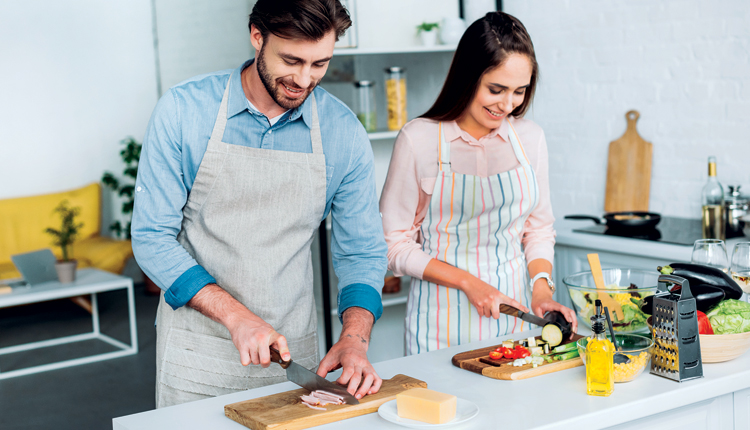How To Avoid Food Poisoning In The Kitchen
To avoid problems leading to food poisoning in the kitchen, remember the following:
- Keep raw poultry away from ready-to-eat foods.
- Store raw foods below ready-to-eat or cooked foods in the fridge.
- Use separate chopping boards for raw and cooked poultry/meat.
- Wash and dry your hands thoroughly, with hot water and soap, after handling raw poultry.
- After preparing poultry, clean all utensils and worktops thoroughly with an antibacterial spray.
Defrosting – If using a frozen poultry, ensure that it is properly defrosted before cooking, otherwise bacteria could survive the cooking process. Ideally, defrost it in its original wrapper, in a dish or tray (where it will not touch other foods), in your fridge at 4°C (39°F). As a rough guide, it will take 4 to 6 hours to defrost per 450g (1lb) but check the packaging for full instructions. Regularly pour away any liquid that drains from the defrosting it, to stop it overflowing and spreading bacteria. Take care not to splash the liquid onto worktops, dishes, cloths or other food – and remember to wash your hands before and after.
If there’s no room in your fridge, you can thaw your poultry by totally submerging it in cold water, in a clean sink, in its original wrapper. This method takes approximately 30 minutes per 450g (1lb). Change the water every 30 minutes, taking care not to splash, and remember to wash your hands thoroughly after. Bleach the sink after you’ve finished, too.
Before cooking, ensure no ice crystals remain within the cavity, and use a fork to check if the thicker parts are not still frozen. Don’t wash the poultry as this increases the chance of bacteria splashing onto worktops, dishes and other foods. When cooked properly, all bacteria will be killed.
Cooking – Using a meat thermometer will ensure the meat is properly cooked. Thrust the thermometer into the thickest part of the thigh (don’t let the point touch the bone) to check if it has reached the right temperature. Take the chicken out of the oven when it hits 65C/150F, but let the temperature rise to 70C/160F if it is not free-range. Be guided by any instructions that come with it. When it is piping hot all the way through, none of the meat will remain pink, and juices will run clear when you pierce or press the thigh.
Let it rest for at least half an hour, and up to an hour and a half, covered in foil. It will continue to cook and the internal temperature will go on rising. Don’t re-heat poultry more than once. Happy eating!


Comments are closed.